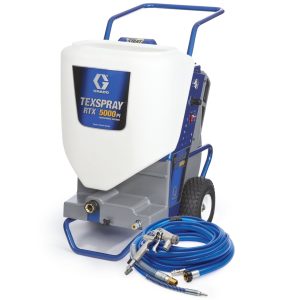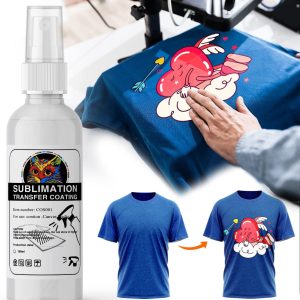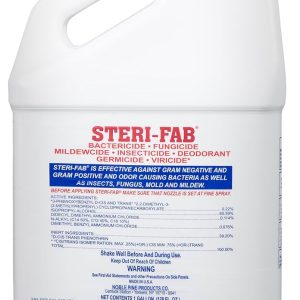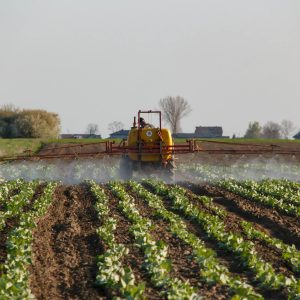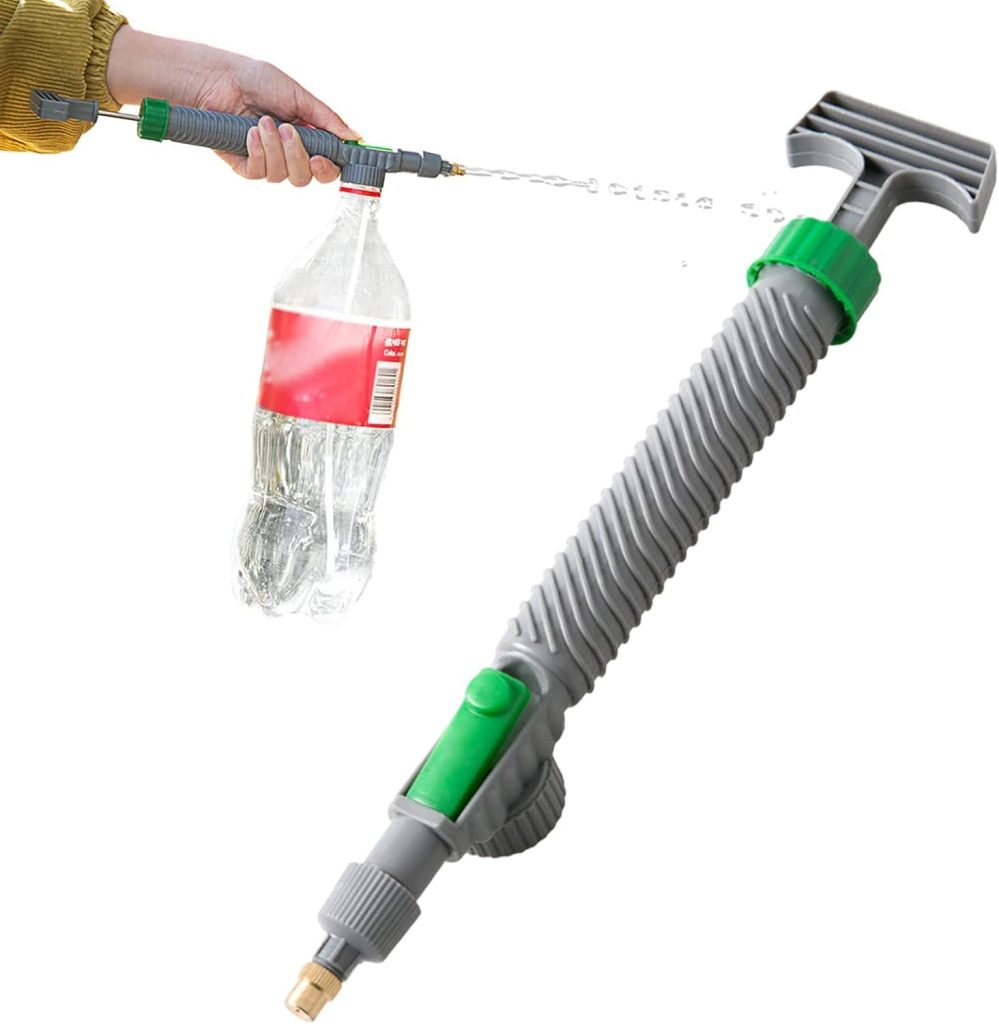
Manual spraying systems have become essential tools across numerous industries and applications, with the hand pump for spray mechanisms leading the way in providing reliable, cost-effective solutions for liquid application needs. These versatile devices offer precision control, portability, and independence from electrical power sources, making them indispensable for everything from agricultural pest control to household cleaning tasks.
Understanding the mechanics and applications of hand pump spray systems is crucial for anyone looking to make informed purchasing decisions or optimize their current spraying operations. Whether you’re a professional landscaper, maintenance worker, or homeowner tackling various projects, the right hand pump sprayer can significantly improve efficiency and results while reducing costs and environmental impact.
What is a Hand Pump for Spray?
A hand pump for spray is a manually operated pressure system designed to atomize and distribute liquids through controlled application. The sprayer pump can be just as important as the sprayer type itself as there are many sprayer pump design types with various construction materials, inlet/outlet sizes, and performance specifications. Common sprayer pump types include diaphragm, centrifugal, and roller pumps.
These systems work by creating pressure through manual pumping action, which forces liquid through specialized nozzles to create various spray patterns. The fundamental principle involves building pressure in a sealed container, then releasing that pressure through controlled outlets to achieve desired coverage patterns and droplet sizes.
The versatility of hand pump spray systems makes them suitable for applications ranging from fine misting to powerful jet streams. Unlike electric or gas-powered alternatives, manual pump sprayers offer complete operator control over pressure and flow rates, making them ideal for precision work where consistent, measured application is essential.
Types of Hand Pump Spray Systems
Compression Tank Sprayers
Compression tank sprayers represent the most common type of hand pump for spray applications. These units feature a sealed tank with an integrated pump handle that builds pressure through repeated pumping motions. Tank capacities typically range from 1 to 4 gallons, with larger commercial units available for extensive applications.
The construction materials vary significantly, with polyethylene tanks offering chemical resistance and lightweight portability, while stainless steel versions provide superior durability and compatibility with harsh chemicals. Professional-grade units often incorporate pressure gauges, allowing operators to monitor and maintain optimal working pressures for consistent results.
Trigger Spray Bottles
Smaller handheld trigger sprayers utilize a different pumping mechanism, where each trigger pull activates a small pump that draws liquid from the reservoir and expels it through the nozzle. These units excel in applications requiring frequent start-stop operation and precise targeting of small areas.
The pump mechanism in trigger sprayers typically employs a spring-loaded piston system that creates suction on the return stroke and pressure on the forward stroke. Quality units feature adjustable nozzles that can produce anything from fine mists to solid streams, making them versatile tools for various household and professional applications.
Backpack Sprayers with Hand Pumps
Backpack-style units combine the mobility advantages of wearable systems with the reliability of manual pump mechanisms. These sprayers typically feature larger tank capacities (3-5 gallons) and incorporate lever-style pumps that can be operated while wearing the unit, allowing for continuous application over large areas.
The ergonomic design of quality backpack sprayers distributes weight evenly across the operator’s back and shoulders, reducing fatigue during extended use. Many professional models include padded straps, quick-disconnect fittings, and multiple nozzle options to enhance operator comfort and application versatility.
Key Applications for Hand Pump Spray Systems
Agricultural and Horticultural Uses
In agricultural settings, hand pump for spray systems serve critical roles in pest management, fertilizer application, and crop protection. They are commonly used for pest control, lawn care, stains, and sealers. The precision control offered by manual systems makes them ideal for spot treatments, organic farming applications, and situations where drift control is paramount.
Professional farmers and horticulturists rely on hand pump sprayers for applying herbicides, insecticides, fungicides, and foliar fertilizers. The ability to maintain consistent pressure without relying on mechanical systems makes these tools invaluable in remote locations or when treating sensitive crops that require careful application rates.
Cleaning and Maintenance Applications
IK Pump sprayers are used in a wide variety of sectors and applications. Cleaning and disinfection of different types of surfaces, pest control, automotive and vehicle detailing, virus and epidemic control, application of different substances in construction and maintenance of all types of machinery.
Industrial cleaning operations benefit significantly from the controlled application capabilities of manual pump sprayers. These systems excel at applying degreasers, disinfectants, and specialized cleaning solutions where precise coverage and chemical concentration are critical for effective results.
Construction and Manufacturing
In construction environments, hand pump sprayers facilitate the application of concrete curing compounds, release agents, and protective coatings. The portable nature of these systems makes them ideal for construction sites where access to power sources may be limited or impractical.
Manufacturing facilities utilize hand pump for spray systems for applying lubricants, coolants, and protective coatings in precision applications where automated systems would be excessive or impractical. The immediate responsiveness of manual systems allows operators to adjust application rates and patterns in real-time based on specific requirements.
Components and Mechanics of Hand Pump Sprayers
Tank and Reservoir Systems
The tank serves as both the liquid reservoir and pressure vessel in most hand pump for spray systems. Sprayer handheld pump, a translucent 1 gallon polyethylene tank with capacity levels on the tank for easy measuring. Modern tanks incorporate graduated markings for accurate measuring and mixing, while transparent or translucent materials allow operators to monitor liquid levels during operation.
Tank construction materials must be compatible with intended chemicals while providing adequate pressure resistance. High-density polyethylene offers excellent chemical resistance and impact durability, while maintaining relatively light weight for portable applications. Professional-grade units often feature reinforced seams and pressure relief valves to ensure safe operation under maximum working pressures.
Pump Mechanisms and Pressure Generation
The pump assembly represents the heart of any manual spray system, converting human energy into hydraulic pressure for liquid atomization. Most hand pump for spray systems employ either piston-type or diaphragm-type pump mechanisms, each offering distinct advantages for specific applications.
Piston pumps provide high pressure capabilities and efficient energy transfer, making them ideal for applications requiring significant pressure or extended spray distances. The direct mechanical action of piston systems offers excellent operator feedback, allowing precise control over pressure development and maintenance.
Diaphragm pumps excel in chemical compatibility applications, as the flexible diaphragm isolates the pump mechanism from direct chemical contact. This design reduces maintenance requirements and extends service life when used with corrosive or abrasive liquids.
Nozzle Systems and Spray Patterns
The wand typically has a trigger mechanism to control the flow of liquid and a nozzle at its end. Nozzle selection significantly impacts both application effectiveness and system performance, with different designs optimized for specific spray patterns and droplet sizes.
Adjustable nozzles offer the greatest versatility, allowing operators to vary spray patterns from fine mists to solid streams without changing components. Quality adjustable nozzles maintain consistent patterns across their adjustment range while providing positive detents at common settings for repeatable results.
Spray Pattern Types:
| Pattern Type | Application | Droplet Size | Coverage Area |
|---|---|---|---|
| Fine Mist | Delicate plants, disinfection | 50-100 microns | Wide, even coverage |
| Medium Spray | General purpose, pest control | 100-300 microns | Moderate coverage |
| Coarse Spray | Herbicides, heavy applications | 300-500 microns | Targeted coverage |
| Solid Stream | Spot treatments, cleaning | Continuous | Precise targeting |
Maintenance and Care for Hand Pump Sprayers
Routine Cleaning Procedures
Proper maintenance begins with thorough cleaning after each use, particularly when switching between different chemicals or storing the unit for extended periods. The key to keeping it in tip top operating condition is to backflush with clean water every day after use. Oh, and release the pressure when not needed.
The cleaning process should include complete drainage of the tank, followed by filling with clean water and operating the pump system to flush all internal components. For units used with harsh chemicals, multiple rinse cycles may be necessary to remove all residues and prevent chemical reactions or corrosion.
Getting into good habits such as extending the life of your garden sprayer. Ideally it should be triple rinsed out with water, pumped up and the hose, spray gun and any accessories flushed out a few times.
Component Inspection and Replacement
Regular inspection of seals, gaskets, and connections prevents minor issues from developing into major failures. Replacing these parts can restore airtight seals. Inspect the pressure release valve: Make sure it is not stuck open. Clean or replace if it’s damaged. Most quality hand pump for spray systems feature serviceable components that can be easily replaced with basic tools.
Common wear items include pump seals, tank gaskets, hose connections, and nozzle tips. Maintaining an inventory of these components ensures minimal downtime when replacements become necessary. Many manufacturers offer complete seal kits that include all commonly replaced items for convenient maintenance planning.
Storage and Winterization
Proper storage procedures significantly extend the service life of hand pump for spray systems, particularly in climates subject to freezing temperatures. Complete drainage prevents freeze damage to internal components, while proper positioning allows any remaining moisture to evaporate naturally.
Long-term storage should include lubrication of moving parts with appropriate lubricants to prevent corrosion and ensure smooth operation when the unit returns to service. Some operators prefer to store units with a light oil solution in the tank to provide internal component protection, though this requires thorough flushing before resuming normal operation.
Troubleshooting Common Problems
Pressure Loss Issues
Pressure loss represents the most common problem encountered with hand pump for spray systems, typically resulting from seal failures, connection leaks, or pump mechanism wear. If the sprayer will not hold pressure, fill the sprayer 3″ below the top with water. Replace the cap and pump 4 times.
Systematic diagnosis begins with visual inspection of all connections and seals while the system is pressurized. Soap solutions can help identify small leaks that may not be immediately visible, particularly around threaded connections and seal interfaces. If you are experiencing lost or low pressure on your sprayer, check to see if the filter in the backpack is clogged.
Pump Performance Problems
Reduced pumping efficiency often indicates internal wear or damage to pump components. Pump maintenance: Lubricate the pump shaft with appropriate oil if dry. If the pump is broken internally, consider replacing the entire pump. Many pump problems can be resolved through proper lubrication and seal replacement, though severe wear may require complete pump assembly replacement.
Nozzle and Flow Issues
Clogged nozzles and inconsistent spray patterns frequently result from inadequate cleaning or chemical residue buildup. When the spray head cannot be pressed down or the trigger on a hand-held mist spray bottle cannot be pulled, first check if the nozzle is locked or overly tightened.
Regular nozzle cleaning with appropriate solvents prevents most clogging issues, while replaceable nozzle tips allow quick restoration of proper spray patterns when cleaning proves insufficient. Quality nozzles often include built-in filters that require periodic cleaning or replacement to maintain optimal performance.
Selecting the Right Hand Pump for Spray Applications
Capacity and Size Considerations
Choosing the appropriate tank capacity depends on both the application requirements and operator capabilities. Smaller units (1-2 gallons) offer enhanced maneuverability and reduced operator fatigue but require more frequent refilling for extensive applications. Larger units (3-4 gallons) provide extended operating time but may become cumbersome during prolonged use.
Consider the weight of both the unit and the chemical being applied, as some concentrated solutions significantly increase total system weight. Professional operators often maintain multiple units of different sizes to match specific application requirements rather than attempting to use one unit for all tasks.
Chemical Compatibility Requirements
Chemical compatibility represents a critical selection factor for hand pump for spray systems, as improper materials can lead to component failure or dangerous chemical reactions. Polyethylene tanks offer broad chemical compatibility and represent the standard choice for most agricultural and cleaning applications.
Stainless steel construction provides superior chemical resistance and durability but at increased cost and weight. Some specialized applications may require specific seal materials or coatings to ensure long-term compatibility with aggressive chemicals.
Performance Specifications
Key performance factors include maximum working pressure, pump efficiency, and spray pattern capabilities. Higher pressure capabilities enable greater spray distances and improved atomization but require more robust construction and increased pumping effort. Match pressure requirements to specific application needs rather than simply selecting maximum available pressure.
Performance Comparison Table:
| Sprayer Type | Max Pressure (PSI) | Tank Capacity | Weight (Empty) | Best Applications |
|---|---|---|---|---|
| Handheld Trigger | 15-25 | 16-32 oz | 1-2 lbs | Household cleaning, spot treatments |
| Compression Tank | 40-60 | 1-2 gallons | 3-6 lbs | Garden care, small-scale pest control |
| Backpack Manual | 60-90 | 3-5 gallons | 8-12 lbs | Professional landscaping, large areas |
| Heavy-duty Tank | 90-120 | 2-4 gallons | 6-10 lbs | Commercial applications, harsh chemicals |
Safety Considerations and Best Practices
Operator Safety Requirements
Safe operation of hand pump for spray systems requires appropriate personal protective equipment (PPE) and adherence to chemical-specific safety protocols. Minimum PPE typically includes chemical-resistant gloves, eye protection, and appropriate respiratory protection based on the chemicals being applied.
Understanding chemical Safety Data Sheets (SDS) is essential for proper handling and application procedures. Many chemicals require specific ventilation, temperature, or humidity conditions for safe and effective application, making operator knowledge crucial for both safety and application success.
Environmental Protection Measures
Responsible use of hand pump for spray systems includes preventing chemical drift, avoiding application during inappropriate weather conditions, and protecting sensitive areas from unintended exposure. Wind speed and direction significantly impact spray drift, making calm conditions preferable for most applications.
Buffer zones around sensitive areas such as water sources, beneficial insect habitats, and neighboring properties help prevent unintended chemical exposure. Many applications benefit from drift-reducing adjuvants or specialized nozzles designed to minimize fine droplet production that contributes to drift problems.
Equipment Safety Features
Quality hand pump for spray systems incorporate various safety features including pressure relief valves, secure cap mechanisms, and chemical-resistant materials throughout the fluid path. Pressure relief valves prevent over-pressurization that could lead to tank failure or operator injury, while secure caps prevent accidental opening during transport or storage.
Regular inspection and testing of safety features ensures continued protection throughout the equipment’s service life. Replace or repair any damaged safety components immediately, as compromised safety systems can lead to serious accidents or equipment damage.
Professional Tips and Techniques
Application Timing and Conditions
Optimal application timing varies significantly based on the chemical being applied and target requirements. Early morning applications often provide ideal conditions with minimal wind, adequate humidity, and optimal target activity for pest control applications. Avoid applications during temperature extremes or high humidity conditions that may affect chemical efficacy or increase drift potential.
Monitor weather forecasts to ensure adequate time for chemical action before rain or other weather events that might compromise application effectiveness. Some chemicals require specific temperature ranges for optimal activity, making timing crucial for successful results.
Mixing and Preparation Techniques
Proper chemical mixing ensures consistent results and prevents equipment damage from precipitates or chemical reactions. Always add chemicals to water rather than water to chemicals, and use graduated tank markings for accurate measurements. Agitation during mixing prevents settling and ensures uniform concentration throughout the tank.
Pre-mixing concentrates in separate containers before adding to the main tank can prevent compatibility issues and ensure complete dissolution. Some chemicals require specific mixing orders or temperatures for proper preparation, making label instructions essential reading for successful applications.
Calibration and Coverage Rates
Accurate calibration ensures proper application rates while minimizing waste and environmental impact. Establish baseline performance by measuring output rates at various pressures and walking speeds, then adjust techniques to achieve desired coverage rates consistently.
Regular calibration checks throughout extended applications help maintain accuracy as equipment conditions change. Pressure variations, nozzle wear, and operator fatigue all affect application rates, making periodic verification essential for consistent results.
Economic Benefits and Cost Analysis
Initial Investment Considerations
Hand pump for spray systems offer excellent value compared to powered alternatives, with quality units available at fraction of the cost of electric or gas-powered systems. The absence of engines, batteries, or complex mechanical systems reduces both initial costs and long-term maintenance requirements.
Consider total cost of ownership including replacement parts, maintenance supplies, and expected service life when comparing options. Higher-quality units with serviceable components often provide better long-term value despite higher initial costs, particularly for regular users or commercial applications.
Operating Cost Advantages
Manual systems eliminate fuel, electricity, and battery replacement costs associated with powered alternatives. The simplicity of manual operation also reduces training requirements and minimizes the risk of operator error that could lead to equipment damage or application failures.
Reduced complexity translates to lower maintenance costs and longer service intervals, further enhancing the economic advantages of hand pump for spray systems. Many professional operators maintain manual backup units specifically for their reliability and low operating costs.
Return on Investment Analysis
For professional applicators, the reliability and low operating costs of manual systems often provide excellent return on investment through reduced downtime and maintenance costs. The ability to continue operations during power outages or in remote locations adds significant value for many applications.
Homeowners and occasional users benefit from the minimal storage requirements and long service life of quality manual systems. Unlike powered alternatives that require regular maintenance even during periods of non-use, manual systems can remain ready for service with minimal attention.
Innovations and Future Developments
Material Science Advances
Modern hand pump for spray systems benefit from advanced materials that provide improved chemical resistance, reduced weight, and enhanced durability. High-performance plastics and composite materials enable lighter construction while maintaining strength and chemical compatibility requirements.
New seal materials offer extended service life and broader chemical compatibility, reducing maintenance requirements and expanding application possibilities. Some manufacturers now offer specialized materials for specific applications, such as UV-resistant components for outdoor storage or food-grade materials for specialized applications.
Ergonomic Improvements
Recent design improvements focus on reducing operator fatigue and improving ease of use through ergonomic enhancements. Improved pump handle designs, better weight distribution, and more comfortable carrying systems make extended use less tiring and more productive.
Some innovative designs incorporate leverage-enhancing mechanisms that reduce the effort required for pressure generation, making these systems accessible to users who might otherwise struggle with traditional manual pumps. These improvements expand the potential user base while maintaining the reliability advantages of manual operation.
Smart Features Integration
While maintaining the fundamental simplicity of manual operation, some modern hand pump for spray systems now incorporate basic monitoring features such as pressure gauges, flow meters, and application rate indicators. These features help operators maintain consistent application rates and monitor system performance without compromising reliability.
Future developments may include simple electronic monitoring systems powered by the pumping action itself, providing feedback on application rates and system performance while maintaining independence from external power sources.
Frequently Asked Questions (FAQ)
How do I maintain proper pressure in my hand pump for spray?
Maintaining proper pressure requires regular pumping throughout application, typically every 30-60 seconds depending on flow rate and tank capacity. Monitor pressure gauges if equipped, and maintain pressure within manufacturer’s recommended ranges for optimal spray pattern consistency.
What type of hand pump for spray works best for pest control applications?
Compression tank sprayers in the 1-2 gallon range typically provide the best balance of capacity, control, and portability for most pest control applications. Look for units with adjustable nozzles and chemical-resistant construction for versatility and durability.
Can I use any chemical in my hand pump for spray system?
Always check chemical compatibility with tank materials and seals before use. Most polyethylene tanks handle common pesticides and herbicides well, but some chemicals may require specialized materials or equipment. Consult manufacturer specifications and chemical labels for compatibility information.
How often should I replace seals in my hand pump for spray?
Replace seals when you notice pressure loss, visible damage, or after extended use with harsh chemicals. Most seals last 1-2 seasons with proper care, though aggressive chemicals may require more frequent replacement. Keep spare seal kits on hand for quick repairs.
What’s the difference between diaphragm and piston pumps in hand pump for spray systems?
Diaphragm pumps offer better chemical isolation and require less maintenance, while piston pumps typically provide higher pressure and more efficient energy transfer. Choose based on your chemical compatibility requirements and desired pressure levels.
How do I prevent clogging in my hand pump for spray nozzle?
Use proper filtration when filling the tank, clean thoroughly after each use, and strain chemicals before adding to prevent particle buildup. Store with nozzles removed and clean separately to prevent chemical residue from hardening in small passages.
For related spray applications, you might also be interested in learning about hold hair spray techniques for professional styling applications.
Source References:
- Hand pump spray applications and uses – DoMyOwn.com, IK Sprayers, Sprayer Guru
- Maintenance and troubleshooting information – Lawn Care Forum, Live to Plant, ProGreen
- Technical specifications and repair procedures – Wikipedia, Tools Advisers, Solo Product Support
Ready to find the perfect hand pump for spray for your needs? Explore our comprehensive selection of professional-grade manual spray systems designed for reliability, durability, and optimal performance across all applications. Whether you need precision pest control, efficient cleaning solutions, or heavy-duty agricultural applications, the right hand pump for spray system can transform your productivity and results.
Start shopping today and discover why manual spray systems remain the preferred choice for professionals and homeowners who demand consistent performance, economic operation, and dependable service in any environment.
